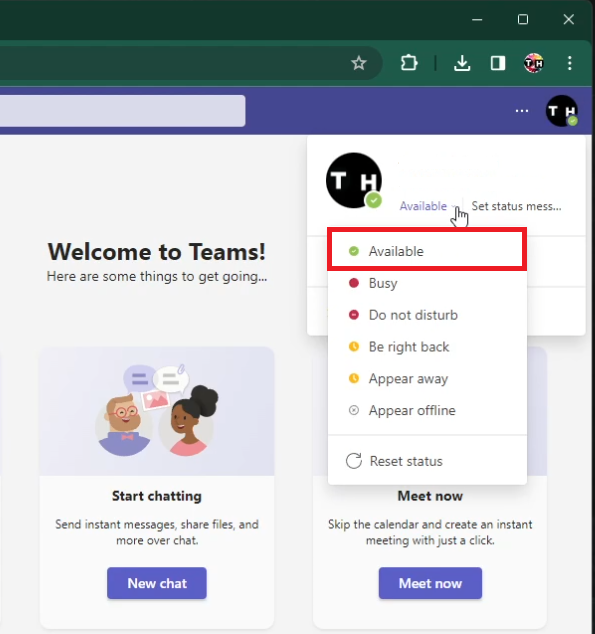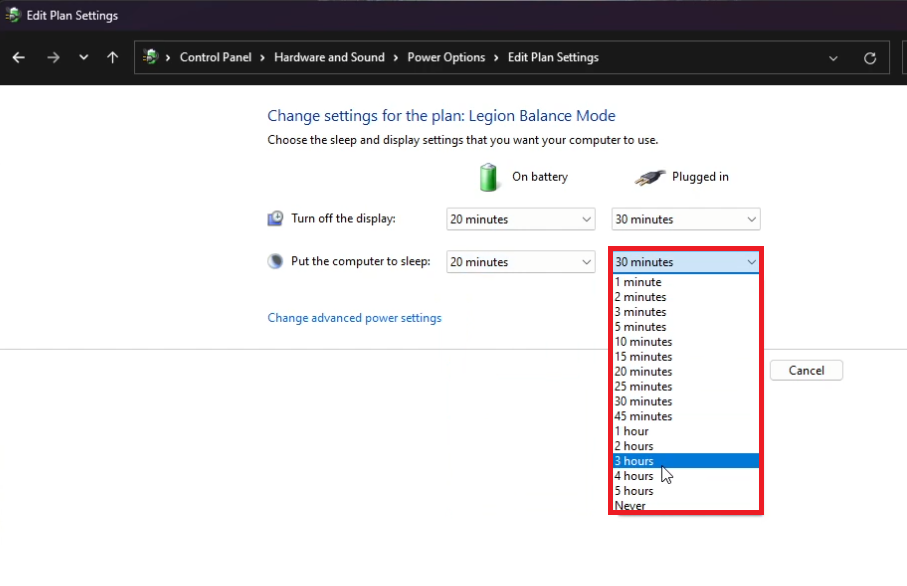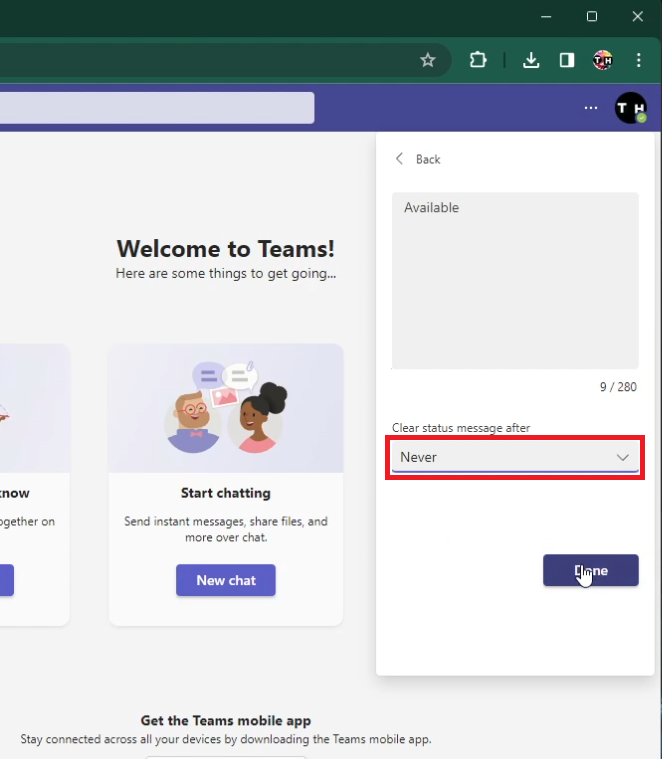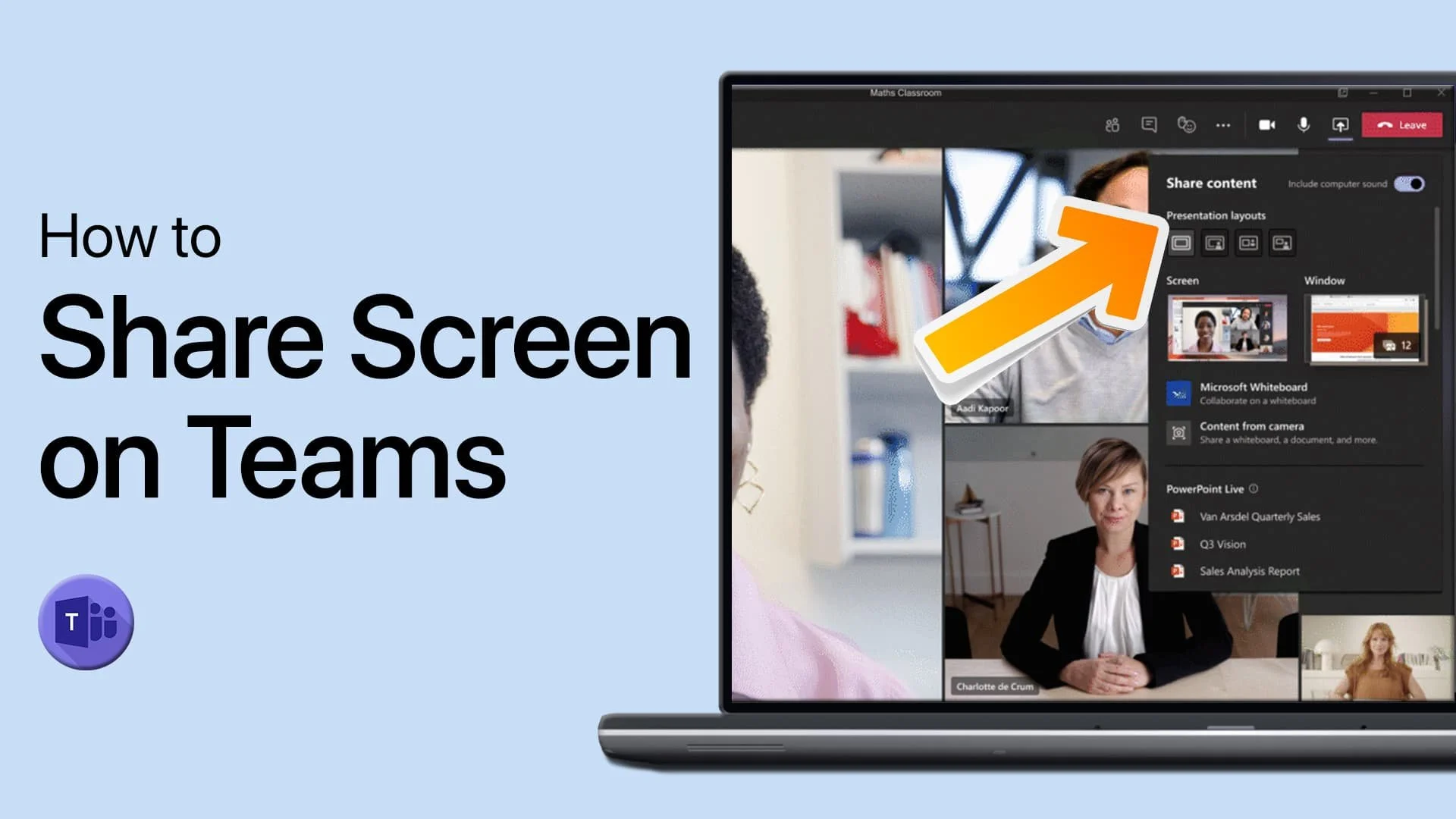How To Stop Teams from Changing to Away Status Automatically
Introduction
Are you frustrated with Microsoft Teams automatically switching your status to "Away"? This guide will help you maintain your preferred status, ensuring accurate representation of your availability. Follow these simple adjustments in Teams and system settings to keep your status set to "Available" or any other preferred setting.
Adjusting Microsoft Teams Status
Set Your Status in Teams:
Click your profile icon in the top right corner of the Teams interface.
Select your desired status, such as "Available."
If needed, click "Reset Status" to update.
Set your Microsoft Teams Status
Maintaining Your "Available" Status
Adjust Sleep Settings in Windows:
Open Control Panel by searching "Control Panel" in the Start menu.
Set view mode to "Category" and navigate to "Hardware and Sound" > "Power Options."
Click "Change Plan Settings" next to your current power plan.
Adjust the "Put the computer to sleep" setting to a longer duration, like 3 hours.
Control Panel > Hardware and Sound > Power Options
Implementing a Permanent Custom Status in Microsoft Teams
Create a Persistent Custom Status:
Click your profile picture in the upper-right corner of Teams.
Select "Set Status Message."
Personalize Your Status:
Enter a personalized message in the status message window.
Set "Clear status message after" to "Never."
Click "Done" to finalize.
Set a custom status message in Teams
By following these steps, you can manage your presence on Microsoft Teams more effectively, ensuring your status accurately reflects your availability.
-
To keep your Microsoft Teams status set to "Available," navigate to your profile icon, click, and manually select your desired status. Ensure your computer's power settings are adjusted to prevent it from going to sleep, as inactivity can change your status to "Away.”
-
Yes, you can set a custom status message in Teams to remain indefinitely. Click on your profile icon, select "Set Status Message," input your desired message, and choose the "Never" option under "Clear status message after.”
-
Adjusting your computer's sleep settings can influence Teams' status by preventing the application from marking you as "Away" due to inactivity. Access your Control Panel, go to "Power Options," and set "Put the computer to sleep" to a longer duration or to "Never.”
-
While setting your status to "Available" and adjusting sleep settings can help maintain your online presence, some organizational tools and settings may allow employers to monitor activity levels, regardless of status messages.
-
On mobile, open the Teams app, tap on your profile picture, then select your status. You can choose "Available," "Busy," or any custom status, similar to the desktop version. Keep in mind, mobile devices have different settings for background activity that could affect your status.







